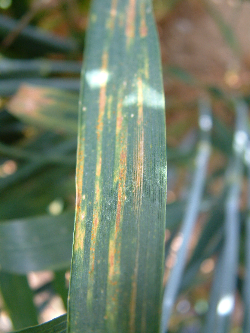
WATCH out for unusually early rust infections spreading into wheat crops over coming weeks, growers are being warned.
High levels of brown rust have been found months ahead of normal across varieties in the South East, says Syngenta technical specialist Chris Rowsell. Similarly, yellow rust has already been found in East Anglia.
And with frosts so far having done little to curb infections, and yellow rust capable of surviving at 0 deg C, the worry is that levels of disease inoculum are already sufficiently high to cause an early epidemic, he stresses, and spread further afield.
"This year, many growers have chosen varieties for their Septoria resistance on the basis that Septoria is the major disease," says Mr Rowsell. "That might be the case. But in doing so they've sometimes chosen varieties that are weaker for rust.
"The area of winter wheat varieties with a brown rust resistance rating of six or below, for instance, has increased from 40% to 50% since last year. Similarly, the area of varieties with a yellow rust rating of six or below this season is 50%.
"My concern is where people have planted these and are looking to cut back on their March T0 or April T1 fungicides based on Septoria resistance. With a mild spring, that could leave the door wide open for rusts.
"Wherever there's a risk you need a good rust-active fungicide," he continues. "The triazole fungicide cyproconazole is known for its rust activity, and is a key ingredient in the new product UKF0282 being developed. Equally, the case for using the rust-active strobilurin Amistar is increased this season," he adds.
Key reasons behind the early rust outbreaks, believes Mr Rowsell, include the planting of susceptible varieties combined with the mild autumn which has produced the sort of lush, forward leaf growth that rust likes.
Initial infection is likely to have come from volunteer cereals and setaside present at planting, he says. Independent South East agronomist, Terry Kemp, who has already seen wheat crops with up to half their leaf area infected with brown rust, agrees.
"It's come from over-wintered stubble," says Mr Kemp, "which is something we're going to have to watch in future as farmers get paid to over-winter stubbles.
"Everyone is looking to cut back to save money, but it could be the wrong thing to do. We've got this huge inoculum waiting for the season. I would think we'll need to put on some triazole at T0 for varieties that are more rust prone," he adds.
Elsewhere, in the North and West of the country, Syngenta reports high levels of net blotch are already being found in winter barley.
